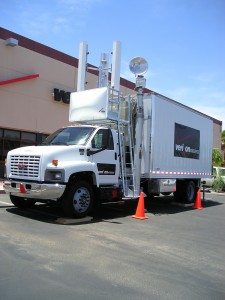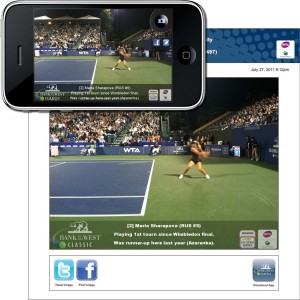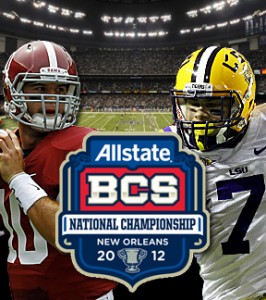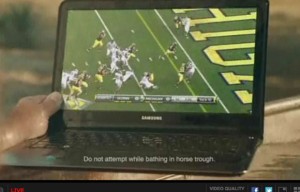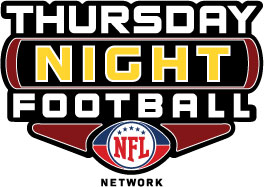The cellular conundrum facing sporting events is old hat to readers of Mobile Sports Report, who know about the bandwidth challenges when 70,000 of your closest friends show up on Sunday and all try to post to Facebook at the same time. For the Super Bowl in Indy’s Lucas Oil Stadium Verizon Wireless has the inside lead, by installing a Distributed Antenna System (DAS), basically a bunch of small cellular antennas hung inside the building to provide better reception. AT&T put a DAS in the Superdome ahead of the BCS championship, and has put DAS installs in other stadiums like Cowboys Stadium in Dallas.
There’s an excellent walk-through with geek-heavy pictures about the Verizon updates in this post by theGadgets blog, which apparently is local to the Hoosier locale. Verizon is also installing public Wi-Fi networks inside both the stadium and the nearby convention center, and will improve outside coverage by bringing in COWs, aka Cell towers On Wheels — mobile antennas that beef up coverage. Verizon notes that Indianapolis is one of its 4G LTE coverage areas, so customers with access to Verizon’s newer faster network will have 4G access at the game, all the better to watch the mobile stream of the Super Bowl via the NFL Mobile app, only available from Verizon.
Also calling in the COWs is competitor Sprint Nextel, which according to a press release out today will drive in two COWs for the stadium, two at the Super Bowl village and one more at the University of Indianapolis (the NFC practice facility). Sprint also says it has “added capacity to 21 CDMA [3G wireless] sites and seven iDEN [push to talk] sites around downtown and surrounding area hotels, including a major capacity upgrade inside the stadium.”
We are still waiting for an official AT&T response but you can bet Ma Bell will also be beefing up its cellular arsenal in advance of the Feb. 5 game day. All good news for connected fans who want to stay linked while they’re at the big game.
